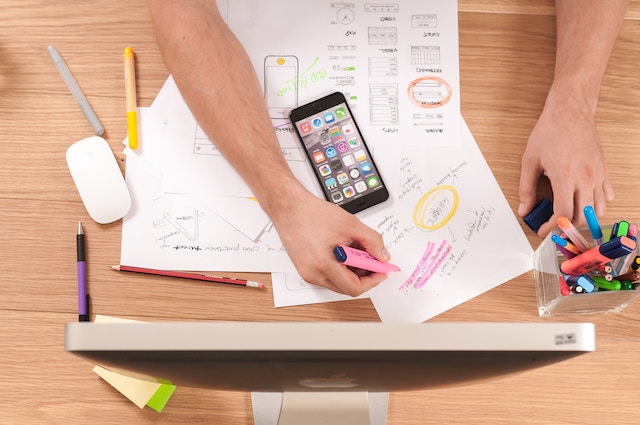7 Smart Tips to Multitask and Actually Get Work Done

Multitasking has its fair share of merits and demerits. Some people swear by it, some people tell you to avoid it at all costs. What I believe in is that everything works differently for different people. You need to find out what works the best for you and then go about doing your thing.
If you believe multitasking can help you get more done, by all means, do it. With the development of good habits and taking on a strategic approach, you can approach all that you want to. Just keep these things in mind to make your multitasking more effective. Multitasking is the most effective when it doesn’t hurt your productivity overall.
1. Limit the projects you take on
It can seem like an exciting prospect to work on a lot of projects at the same time, but productivity wise it is never a good idea. Because projects are just not projects, they have many tasks and subtasks, various deadlines, research work, and testing. So, when you actually start working, it can actually be detrimental to get results because when you focus on a lot of things, you are not exactly working on any one thing properly.
2. Prioritize your tasks

You might feel like all the things you are doing are important, but when you really consider all the things on your list, you will realize they are not. Even if you already multitask and get a lot done, you have to understand that some things are better done with full focus rather than juggling them with other tasks.
The first thing you need to do is to write down all the tasks that you need to get done. Then take a look at each question and ask yourself questions that will help you understand which task should be done right away.
- Deadline – If the task has a deadline that is closer than the other tasks you have, then it needs immediate attention.
- Who are you working for? Is the task for a client or for yourself. If it is for a client, then it holds priority because you get paid.
- Hinderance – If not completing the task right away won’t halt other tasks then you can put it off in preference of other tasks.
- Time – How much time does the time require? Will it be better to do it with total focus or will it be okay to do in chunks with other tasks?
These are some questions that will help you determine what tasks you should do first, and what tasks you can pair with each other without harming your productivity. Mark your high priority tasks in your to-do lists to get the most out of them.
3. Use different calendars

Making a calendar is as important as making a to-do list. It can help make to-do lists and vice versa. There are deadlines and events and product releases, and whatever you have marked on your calendar, so you make your daily task lists based on that.
When you are multitasking, you need to make another calendar because simply writing down a list won’t help you remember what task you are supposed to do when. Make this calendar to represent the tasks you do. Group similar tasks, use blocks of times to do similar tasks daily. Find out what task you can do the best at what time of the day and always assign those kinds of tasks to that specific block of time on your calendar.
4. Use the parts of your brain correctly
You know how you can talk on the phone while eating, and still get both done at the same time without much problem. But you won’t be able to talk on the phone as well as hold a conversation with people you are eating with. This is because eating needs motor function and conversing on the phone needs the language center but talking on the phone and conversing with people around you will need the same language center part of your brain.
One thing that you need to remember is that pairing tasks to be done together is also about the science of how our brain works. Different parts of our brains are used for different things. You need to understand that you cannot do two tasks at a time that require the same part of your brain.
5. Get rid of distractions

It is anyway difficult to focus on your tasks when there are distractions around. It becomes even more difficult when you want to focus on more than one thing. I cannot stress enough about focusing just on the task at hand.
Phones are the biggest distraction, either turn the data off so that you don’t get notifications or keep your phone out of your reach or sight so that you get up only for important phone calls. If you work in an office, then chatty colleagues and the various other sounds can be huge distractions too. You can start putting on noise-canceling headphones so that no one disturbs you. You don’t need to listen to anything, just use it as the universal symbol of “Don’t talk to me” that it is. You can also play ambient sounds like I do to focus better. Brain.fm and Noizio are good options.
6. Use productivity techniques and tools
I have talked about using the Pomodoro Technique and Big Rocks so many times that I think I will have to make a post dedicated to it soon. But, there are so many techniques you can use to work in bursts and motivate yourself to actually get work done.
Most techniques place importance on breaks as well. When you are working non-stop, you and your work are both going to suffer. It helps no one. Use productivity techniques to keep you on your toes and remind you to take breaks as well.
7. Shift tactics to work more
Talking about taking breaks, you don’t only need to take breaks from working, you also need to take a break from multitasking. If you have been successfully multitasking for the better part of the day, there is a high chance that your mind will get tired. If you still work through that, then that is when you face mental burnout.
You need to switch to focusing on doing single tasks if you start feeling overwhelmed. This will give your brain some space to breathe and get ready for another round of multitasking fun.
Not everyone can naturally multitask, and it doesn’t work for everyone either. Strategizing and planning can help you learn the rope of multitasking and then it will become easier for you to implement it in your daily routine.
-
Quotes1 year ago
30 Inspirational Thoughts For The Day
-
Self Improvement1 year ago
7 Tips To Recreate Your Life In 3 Months And Change Your Destiny
-
Motivation1 year ago
5 Excellent Ways To Stay Focused On Your Dreams
-
Quotes1 year ago
21 Quotes About Chasing Perfection And Striving For It
-
Health1 year ago
4 CBD Products Your Dog Deserves To Have
-
Personal Finance2 months ago
How Do I Find My UCAS ID Number?
-
Entrepreneurs1 year ago
1Password Evaluation – The Highest Ranked Password Manager Out There
-
Entrepreneurs1 year ago
51 Lucrative Ways to Make Money From Home



























